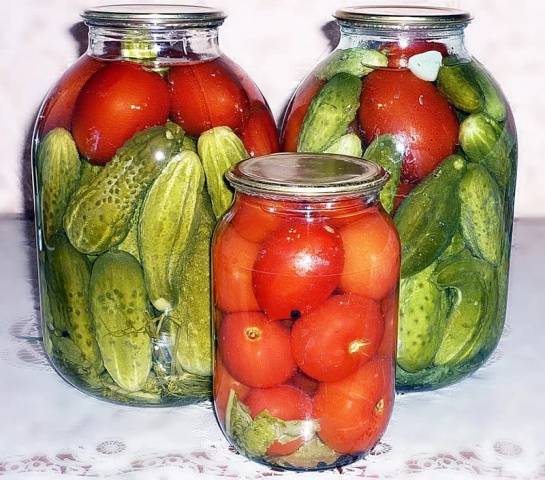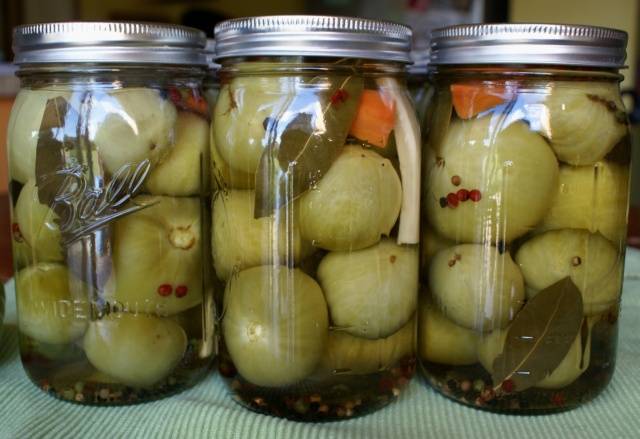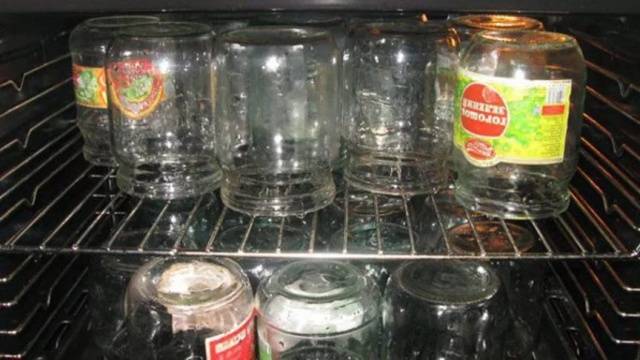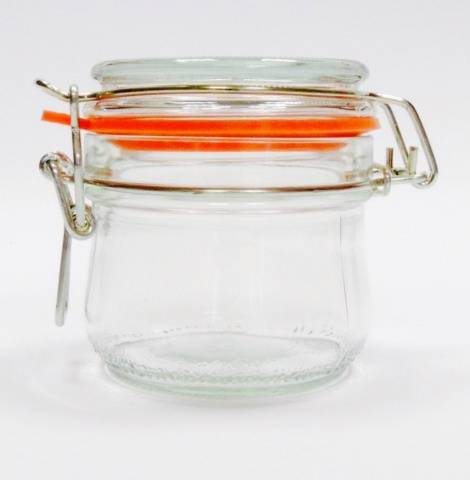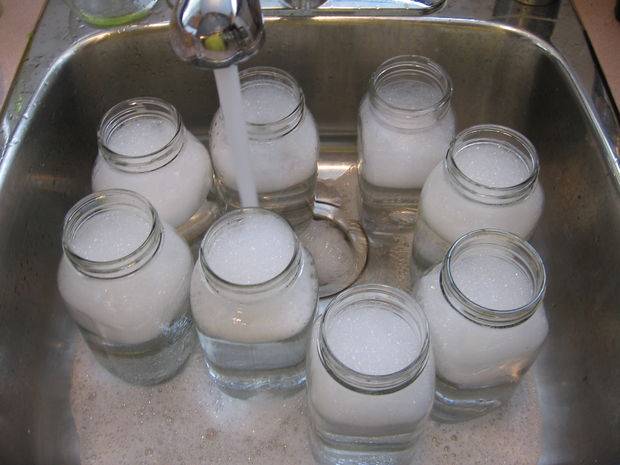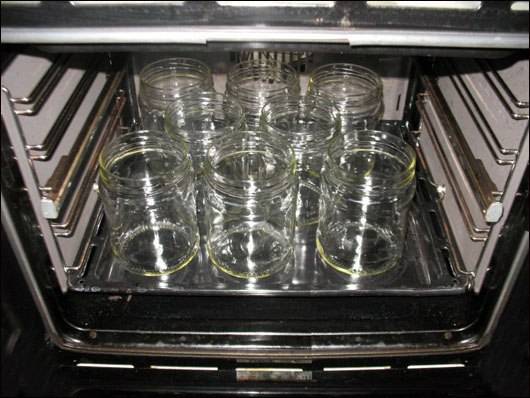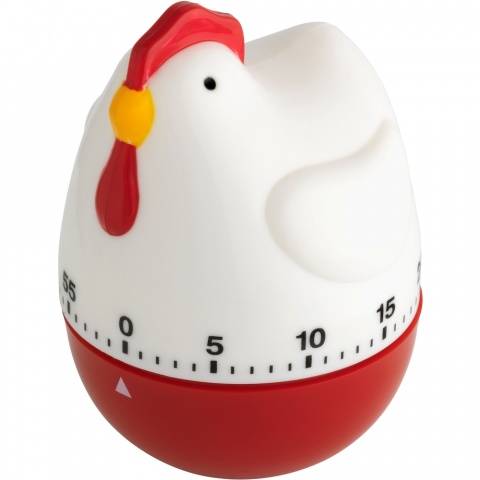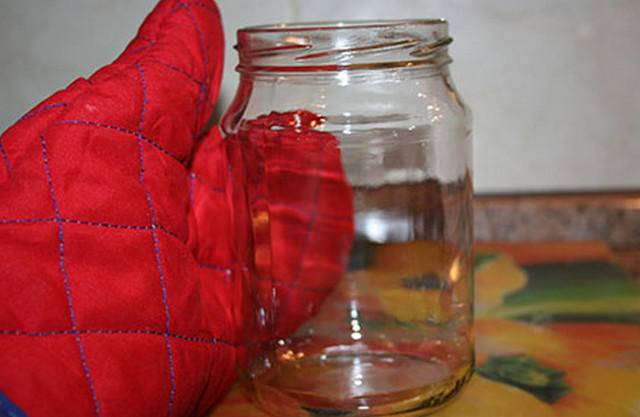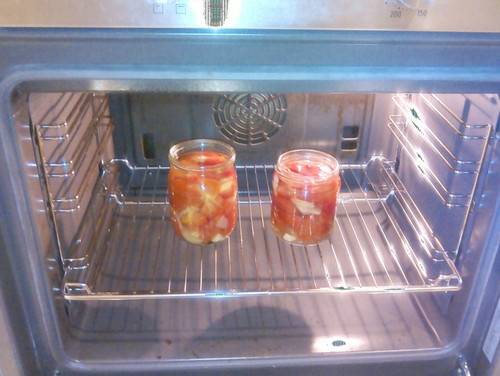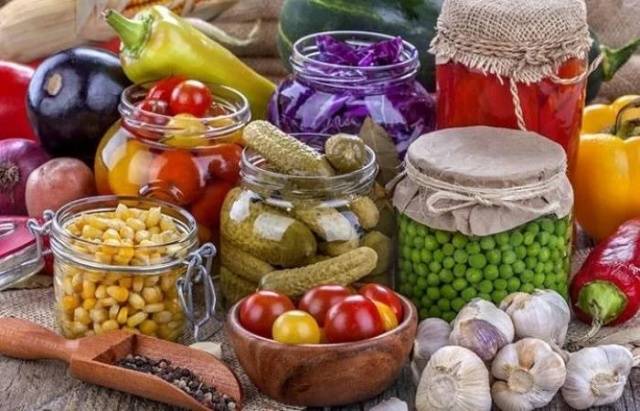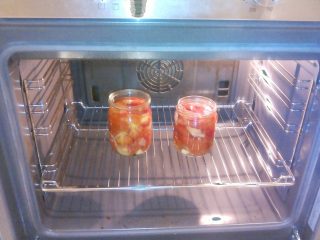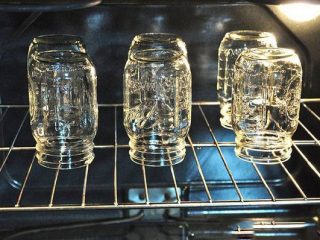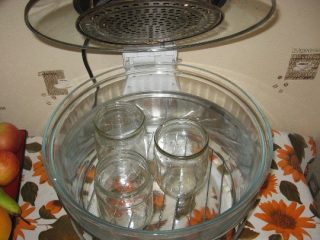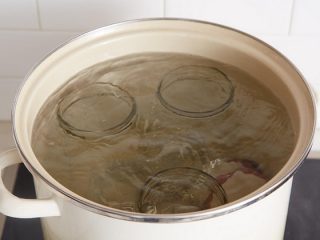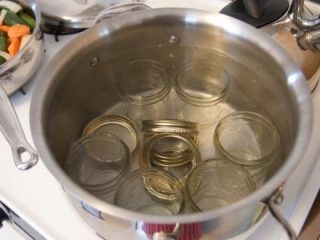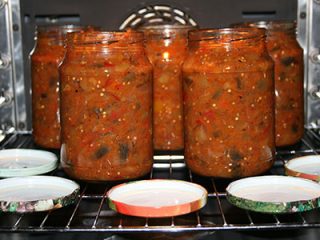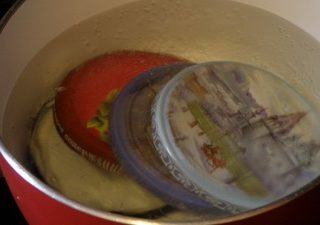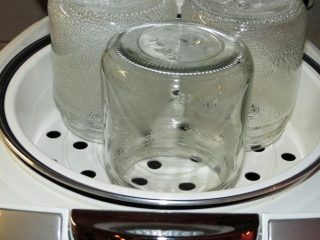Content
Summer is a hot season for hostesses. Vegetables, fruits, herbs, mushrooms, berries ripen. Everything needs to be collected and saved on time. The peculiarities of the Russian climate presuppose the preservation of the crop in the form of conservation.
Jars with blanks are most often stored in apartments, a small part in the refrigerator. The supplies must withstand a long shelf life: 3-8 months. Therefore, in the preservation procedure, sanitary standards for the cleanliness of products and utensils used should be observed.
Containers for preservation should be sterilized - the process of freeing the surface from all types of microorganisms, bacteria, spores, fungi. At home, the sterilization process can be carried out by applying high temperature to the dishes inside the oven.
Oven sterilization benefits
Sterilization of cans in the oven has a number of advantages over other types of sterilization: (steam over a kettle, pouring boiling water over, sterilization in a microwave):
- The reliability of the method. Exposure to high temperatures kills microorganisms;
- Time costs are much lower compared to other methods;
- Volumes. About 10 small containers can be placed in the oven at the same time;
- Safety, provided there are no sudden temperature changes.
Initial preparation of cans
Before placing glass containers in the oven, you need to carefully examine them for physical damage: chips, cracks, air bubbles in the glass. Remove the spoiled jars, they are not suitable for further preservation.
Nowadays, jars are produced with a metal clip and a glass lid, on which a rubber ring is worn for sealing. These jars look very attractive. However, they cannot be sterilized in the oven.
There are non-standard glass jars. It can be difficult to get new covers for them. Therefore, it is better to check such containers in advance for tightness. The jar is filled with water, screwed on with a lid, and wiped dry. Turn the lid over and shake vigorously.
If the lid is tight, not a drop of water will leak out. This container can be used for sterilization with subsequent use for workpieces.
After visual inspection, all dishes are thoroughly washed. It is best to use baking soda or laundry soap. Both methods are good, since the products are easily washed off and additionally disinfect the cans and leave no odor. Pay particular attention to the neck where the lid will connect to the jar. Dirt and dust can accumulate at the thread.
In addition to cans in the oven, lids can also be sterilized. Only those designed for threaded containers are suitable. The covers are also preliminarily inspected for damage. There should be no stains and corrosion, then they are washed with soda or laundry soap.
After washing, you can turn the glass jars upside down and place them on a towel to drain off excess water. If time does not wait, then they can be immediately placed in the oven.
How do I place banks? It doesn't really matter if you put the cans on the bottom or turn them over. If they were damp, then during heat treatment, limescale may remain at the bottom. There will be no harm from it. This is just an aesthetic flaw.
Sterilization process
The washed jars are placed on a wire rack in a cold oven.Sterilization in the oven is the safest method with gradual heating: first, set the temperature to 50 ° C, wait 5-10 minutes, then set it to 100 ° C for the next 5-10 minutes, and again raise the temperature to 150 ° C and also keep it for 5- 10 minutes. The intermediate time depends on the volume of the can.
How long it takes to sterilize the jars depends on their volume:
- 0.5-0.7 liter - 10 minutes;
- 0.7-1 liter - 10-15 minutes;
- 1.5-2 liter - 20-25 minutes;
- 3 liter - 25-30 minutes.
The lids are sterilized for 10 minutes at a temperature of 150 ° C.
The sterilization temperature should not be very high, the maximum should not exceed 200 ° C.
Another way for the sterilization process: empty, clean cans are placed in a cold oven. And set the desired temperature. Look at the glass of the door. It will soon be covered with condensation, after a few minutes the drops will dry out. Then you can start timing.
After the required time has passed, turn off the oven and open the door slightly so that the jars begin to cool. The process can be accelerated by removing the cans and placing them on a thick towel.
Even on a hot summer day, the table and the newly heated jar have too large a gap in temperature, the jar can crack.
Observe the rules of personal safety! Remove jars from the oven only with oven mitts or a thick towel. They may still be too hot.
The towel or potholders must be dry so as not to cause temperature extremes and damage to the jar.
Watch a helpful video:
Cans should not be filled with blanks immediately after high temperature treatment. In some recipes, it is recommended to lay out freshly cooked salads, lecho or adjika in hot sterile jars. In such cases, the jars need to cool down for a while. They should be hot or warm, but not hot.
Vegetable or fruit preparations that have undergone heat treatment, but they contain little vinegar or sugar according to the recipe, require additional heat treatment.
After they have been laid out in warm jars, place them in a cold or warm oven and set the temperature to 150 ° C. The times for filled cans are as follows:
- 0.5-0.7 liter - 10-15 minutes;
- 1 liter - 15-20 minutes;
- 1.5-2 liter - 20-25 minutes;
- 3 liter - 30 minutes.
The lids can be used to cover the jars, but do not tighten in any way. Or put it side by side on a wire rack or baking sheet.
After the time has elapsed, the oven is turned off, and the jars are left in it for a while to cool down, 5-10 minutes. You can open the door a little. Then the containers are removed, immediately sealed with sterile lids and placed under a blanket for slow cooling.
Conclusion
Summer day - the year feeds. Therefore, many of us try to be in time both in the garden and in the kitchen. There is no time left for rest. To shorten your time in the kitchen, use the oven as an assistant. Sterilized dishes and salad will last longer and not a liter will spoil, you will not have to regret the time and products you spend.
